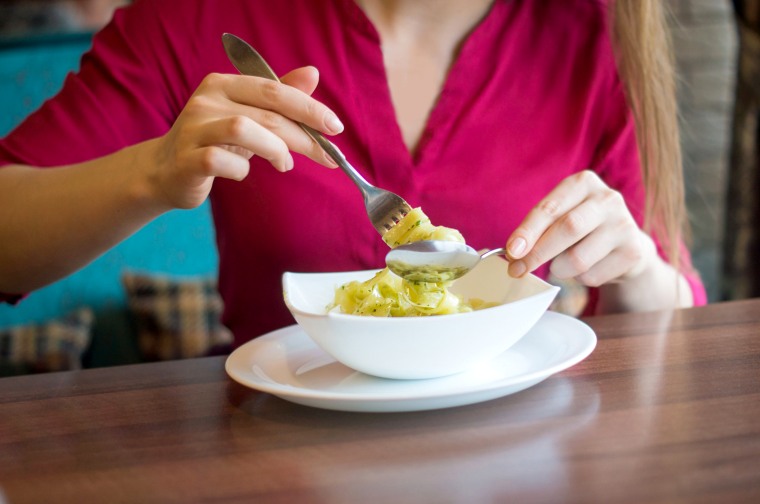We all have brands and foods that we love, but we need be honest about what it means to “love” a food that, in many cases, was engineered to be lovable and, yes, irresistible.
New research has confirmed something the average American discovered a long, long time ago: Burgers, creamy-sauce laden pasta dishes and pizza all affect our brains in ways that straight-from-the-land food sources biologically never could.
A study led by Yale University and published in "Cell Metabolism" shows that when dietary fat is combined with carbohydrates in a single-source food item (as we primarily find in the processed foods and pre-packaged meals that dominate the American food landscape) our brains find them to be more rewarding in ways that are difficult to resist.
What happens when we mirror that irresistible combination in processed foods and comfort-food meals that rule the aisles of our grocery stores and menus of our restaurants?
The study also notes that there is only one kind of single-source food item that naturally combines fat and carbs together: Breastmilk, though it should be noted that the ratio of dietary fat to carbohydrates in it is nothing like what’s found in the average food item.
Fat and carbs in breastmilk makes sense — it teaches infants the necessary desire to feed in order to survive. But what happens when we mirror that irresistible combination in processed foods and comfort-food meals that rule the aisles of our grocery stores and menus of our restaurants?
Doing so is, of course, the processed food industry’s business model — and, for them, it’s good business. They often invest millions of dollars in researching what it is that will attract the largest number of people possible, and then flood the market with as many variations on that winning formula as possible.
But that "winning" formula is also a large part of what is making Americans sick.
The food industry is built upon creating items that make it hard for us to put down the box, bag or jar, to make us lifelong fans and customers.
When the study talks about “carbohydrates,” that includes (or becomes) “sugar” — and we already know that Americans are getting far too much of that.
When sugar floods our pantries and refrigerators in an irresistible form, it also floods our bodies. It explains why we’ve been seeing skyrocketing rates of not only weight gain in children, but high blood pressure and diabetes — and the numbers are starkest for children of color.
New research presented by the Centers for Disease Control and Prevention shows this in the starkest possible terms. After analyzing data from 800 children under 2 years of age, the CDC discovered that 99 percent of children ages 19-23 months are consuming over 28 grams of added sugar in a day. That is the equivalent of an adult-sized Snickers bar for a very tiny body, as the researchers noted. It’s an early start for a very bad habit.
We have to recognize that the modern dieting advice of “eat less, move more” isn’t going to cut it.
In adults, the numbers are also astonishing. Rates of obesity, heart disease, and diabetes are continuing to climb, also for obvious reasons. The average American is supposed get less than 10 percent of their daily calories from added sugars but, considering how the average American’s diet is at least approximately 60% percent processed food, it’s safe to presume that most of us are exceeding that 10 percent by a mile.
The food industry is built upon creating items that make it hard for us to put down the box, bag or jar, to make us lifelong fans and customers. We overindulge in a food item and rush back to buy another package or — even better — buy packages in bulk when we return to the store. And the evidence increasingly suggests that our overindulgence isn't really under our conscious control.
So while we haven’t quite pinpointed why some people experience no difficulty turning food away and others struggle, we have to acknowledge our fellow friends and loved ones who don't have it as easy. We have to acknowledge that the science has validated the existence of that struggle, and that it's not a conscious one for many people.
We can’t all simply, easily “eat less” of biologically irresistible foods.
More importantly, we have to recognize that the modern dieting advice of “eat less, move more” isn’t going to cut it.
If the foods are designed or prepared in a way intended to make them irresistible, and we recognize that there are people who are incapable of resisting, it does no good to tell them to just eat less of it. It only serves the food industry, which strives to maintain the veneer of caring about public health while wanting to protect their bottom line — a bottom line that would be dramatically impacted if we advised people to do what was in their best interest: Stop buying these foods at all.
We can’t all simply, easily “eat less” of biologically irresistible foods. Resisting them entirely may be the only way to keep from getting hooked.
Erika Nicole Kendall is the writer, certified personal trainer and certified nutritionist behind the popular weight loss blog A Black Girl's Guide to Weight Loss.

